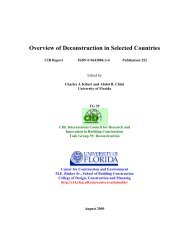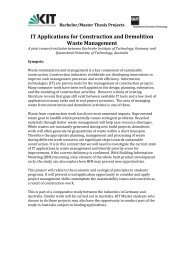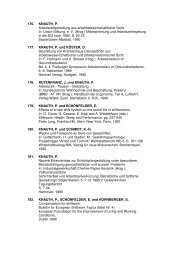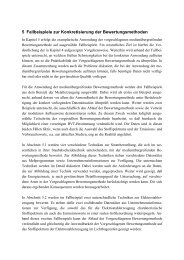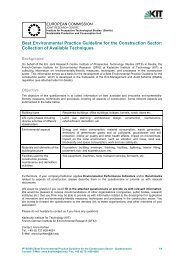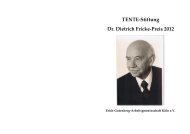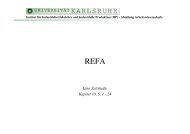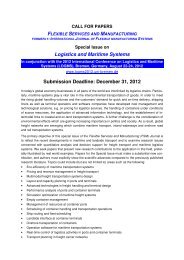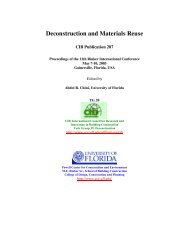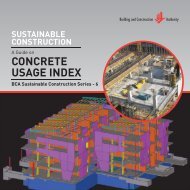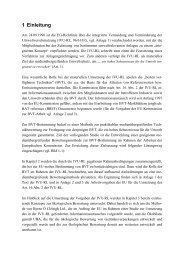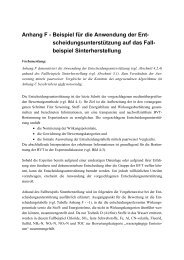Waste reduction final report -4 - Test Input
Waste reduction final report -4 - Test Input
Waste reduction final report -4 - Test Input
You also want an ePaper? Increase the reach of your titles
YUMPU automatically turns print PDFs into web optimized ePapers that Google loves.
Sustainable Development Strategy<br />
Relevant measures for sustainable building and construction waste:<br />
Measure 4-1: Integrated Product Policy (IPP)<br />
(1) Public sourcing – Sustainable purchasing praxis of the state<br />
(2) Private consumption – sensitisation of consumers<br />
(3) Life Cycle Analysis / methodology of the thinking in lifecycles<br />
(4) Product standards and product labelling in order to enforce and foster environmental<br />
and social standards<br />
(5) Sustainable material management – strategies aiming for the <strong>reduction</strong> of resources use<br />
and environmental burdens.<br />
Measure 4-2: Sustainable Building<br />
(1) Sustainable strategy on immovable belonging to the federal state: Cooperation with the<br />
syndicate of private professional building contractors. The strategy will be based on the<br />
“Compendium on sustainable immovable management” being published in the end of<br />
2009 by the coordination group of construction and property of the federal state (KBOB).<br />
(2) Influence of public building contractors as purchasers: One third of yearly construction<br />
investments are made by the public authorities. Therefore, these constructions should<br />
serve as role models.<br />
(3) Influence of the state on building relevant programs: Existing programs on sustainable<br />
building shall be synchronised and new programs shall be initiated if necessary<br />
(4) Exertion of influence on regulations and standards in the construction field: Relevant<br />
standards will be established respecting all important stakeholders.<br />
(5) Enforcement of the network in sustainable building in Switzerland: Constructors,<br />
economy and research should work together.<br />
Multi Dell Concept, further explanations<br />
The building industry has widely accepted a concept of waste separation in four different<br />
dells.<br />
Dell 1: Separated<br />
materials<br />
Dell 2: Mixed<br />
mineral debris<br />
Dell 3: Burnable<br />
waste<br />
Dell 4: Bulky<br />
goods<br />
Inert materials<br />
(excavation earth,<br />
road construction<br />
waste, asphalt,<br />
concrete<br />
demolition);<br />
Metals<br />
Mixed mineral<br />
fraction, not<br />
combustible<br />
(ceramics,<br />
gypsum, natural<br />
stones etc.)<br />
Burnable materials<br />
which can’t be<br />
reused/recycled<br />
(wood, plastics,<br />
insulations etc.)<br />
Mixed waste of the<br />
other dells<br />
Dell 4 is more costly for removal than the others. Special waste mustn’t be disposed off in<br />
these dells.<br />
The dells are then brought to regional sorting plants, where the materials are sorted out<br />
manually or with machines. After that, the materials go to the different treatment ways.<br />
160



